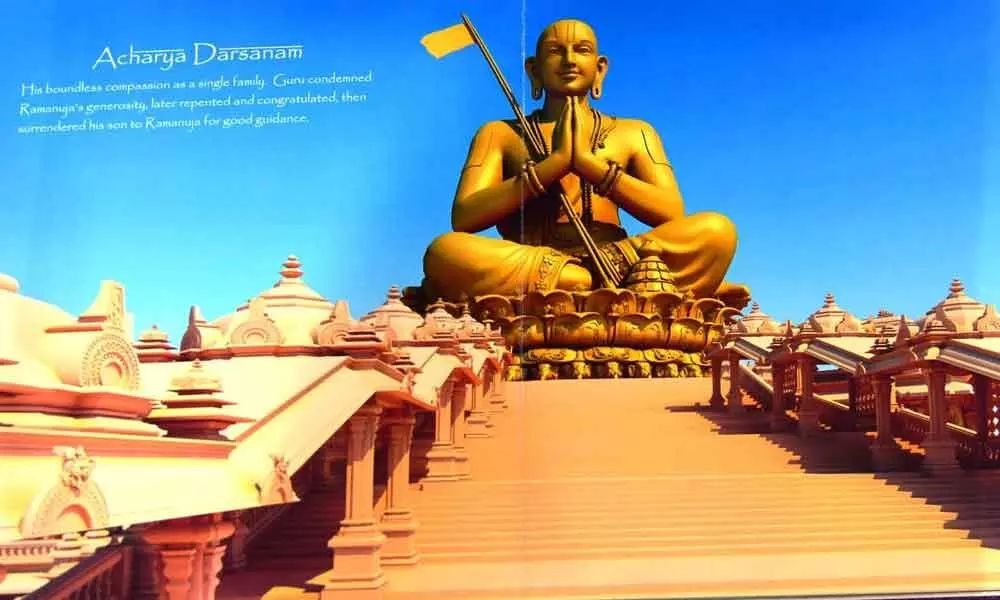Beware of the villains like lust, anger, ego and greed- Ramanujacharya

Ramanujacharya
While Adi Shankaracharya held ‘Brahma Satya and Jagat Mithiya’ (God is real, World is an Illusion), and that Brahma or God was behind each occurrence mentioned above, Ramanujacharya held a third view. He felt that Brahma or God is the reason for the two i.e. Nimit Karan and Upadan Karan but Prakruti or Nature also has a role in the Sadharan Karan.
While Adi Shankaracharya held 'Brahma Satya and Jagat Mithiya' (God is real, World is an Illusion), and that Brahma or God was behind each occurrence mentioned above, Ramanujacharya held a third view. He felt that Brahma or God is the reason for the two i.e. Nimit Karan and Upadan Karan but Prakruti or Nature also has a role in the Sadharan Karan.
The Acharya was also a follower of the Vishistadvaita philosophy, which is one of the most popular schools of Vedanta under which it is believed that God alone exists but is characterised by multiplicity; thus, non-dualism of the qualified whole.
Ramanujacharya, who lived to the ripe age of 120 years, was a brilliant scholar and learned the Vedas at a supple age. He travelled across the country and established many temples including the Ranaganathaswamy Temple in Srirangam where his charisma became a talking point in the town of Tiruchirappalli on the banks of River Cauvery.
Before entering into a state of Nirvana in Srirangam, Ramanujacharya gave a simple discourse. He asked devotees never to disrespect a Sadhu, take refuge in God, chant the holy name and beware of the villains inside like lust, anger, ego, greed and delusion.
Ramanuja travelled throughout the length and breadth of India to disseminate the path of devotion. He visited all the sacred places throughout India including Kashi, Kashmir and Badrinath. On his way back he visited Tirupati. There he found the Saivites and the Vaishnavites quarrelling with one another, one party contending that the image of the Lord in the Tirupathi hills was a Saivite one and the other party saying that it was a Vaishnavite one.
Ramanuja proposed that they should leave it to the Lord Himself to decide the dispute. So they left the emblems of both Siva and Vishnu at the feet of the Lord, and after locking the door of the temple, both parties stayed outside on guard.
In the morning, when they opened the doors, it was found that the image of the Lord was wearing the emblems of Vishnu, while the emblems of Siva were lying at its feet as left there the evening before. This decided that the temple was a Vaishnavite one and it has remained so ever since.
Ramanuja finally settled permanently in Srirangam and continued his labours of preaching the Visishtadvaita philosophy and writing books. Thousands of people flocked to him every day to hear his lectures. He rectified many social evils which had crept into the community. He had a congregation of 700 Sannyasins, 74 dignitaries who held special offices of ministry, and thousands of holy men and women, who revered him as God.



















